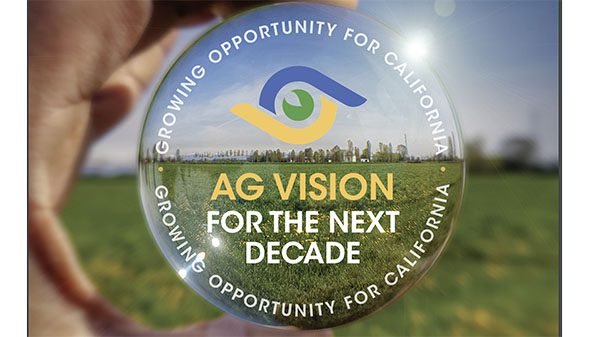
Both the federal government and some state governments are advancing “climate-smart agriculture.”
The California Department of Food and Agriculture (CDFA), for example, recently released a policy agenda for the next decade that would “foster climate-smart, resilient and regenerative food systems.”
But a newly released study issued by the Stanford Law School says, “Forward progress in this area . . . is constrained by major data and analytical gaps that prevent accurate and verifiable quantification of how much climate-smart farming and ranching practices are growing carbon stocks in soils and biomass or reducing methane and nitrous oxide emissions.”
To translate from the academese, current scientific knowledge isn’t good enough to make sure that “climate-smart” practices are doing what they’re supposed to do.
The report focuses on two sources of air pollution associated with climate change. One—methane emissions from livestock operations (aka cattle flatulence)—does not directly concern the produce industry. The other one does: nitrous oxide emissions. Agricultural fertilizers commonly rely heavily on nitrates, which, as their name suggests, include nitrogen. Nitrate emissions, taking the form of nitrous oxide, are believed to be partly responsible for climate-altering pollution.
The Stanford study says that in many respects, the science behind climate-smart recommendations hasn’t been pinned down well enough to make sure they are working in the way they’re supposed to.
The report does not debunk the value of climate-smart practices; it merely says that they need further refinement. A proposed Nitrous Oxide Demonstration Project, for example, promotes “research regarding fertilizer application practices that optimize both fertilizer efficacy and emissions reductions” as well as “fast-track testing and training in applying the N [nitrogen] balance method of measuring and monitoring nitrous oxide emissions for fertilizer use.”
Another major aspect of climate-smart agriculture is soil carbon storage. Growers who can prove that their practices add carbon to the soil (offsetting carbon emissions elsewhere) can be eligible for carbon credits. Nevertheless, says the report, that measurement of soil carbon storage needs to be further refined.
The upshot: there is much that needs to be learned about climate-smart practices and how well they actually work. All the same, public policy for the foreseeable future will continue to promote climate-smart agriculture. It would no doubt be wise for growers to understand and follow developments here, not only to comply with government requirements, but to use their own resources more efficiently and economically.
Both the federal government and some state governments are advancing “climate-smart agriculture.”
The California Department of Food and Agriculture (CDFA), for example, recently released a policy agenda for the next decade that would “foster climate-smart, resilient and regenerative food systems.”
But a newly released study issued by the Stanford Law School says, “Forward progress in this area . . . is constrained by major data and analytical gaps that prevent accurate and verifiable quantification of how much climate-smart farming and ranching practices are growing carbon stocks in soils and biomass or reducing methane and nitrous oxide emissions.”
To translate from the academese, current scientific knowledge isn’t good enough to make sure that “climate-smart” practices are doing what they’re supposed to do.
The report focuses on two sources of air pollution associated with climate change. One—methane emissions from livestock operations (aka cattle flatulence)—does not directly concern the produce industry. The other one does: nitrous oxide emissions. Agricultural fertilizers commonly rely heavily on nitrates, which, as their name suggests, include nitrogen. Nitrate emissions, taking the form of nitrous oxide, are believed to be partly responsible for climate-altering pollution.
The Stanford study says that in many respects, the science behind climate-smart recommendations hasn’t been pinned down well enough to make sure they are working in the way they’re supposed to.
The report does not debunk the value of climate-smart practices; it merely says that they need further refinement. A proposed Nitrous Oxide Demonstration Project, for example, promotes “research regarding fertilizer application practices that optimize both fertilizer efficacy and emissions reductions” as well as “fast-track testing and training in applying the N [nitrogen] balance method of measuring and monitoring nitrous oxide emissions for fertilizer use.”
Another major aspect of climate-smart agriculture is soil carbon storage. Growers who can prove that their practices add carbon to the soil (offsetting carbon emissions elsewhere) can be eligible for carbon credits. Nevertheless, says the report, that measurement of soil carbon storage needs to be further refined.
The upshot: there is much that needs to be learned about climate-smart practices and how well they actually work. All the same, public policy for the foreseeable future will continue to promote climate-smart agriculture. It would no doubt be wise for growers to understand and follow developments here, not only to comply with government requirements, but to use their own resources more efficiently and economically.
Richard Smoley, contributing editor for Blue Book Services, Inc., has more than 40 years of experience in magazine writing and editing, and is the former managing editor of California Farmer magazine. A graduate of Harvard and Oxford universities, he has published 12 books.




